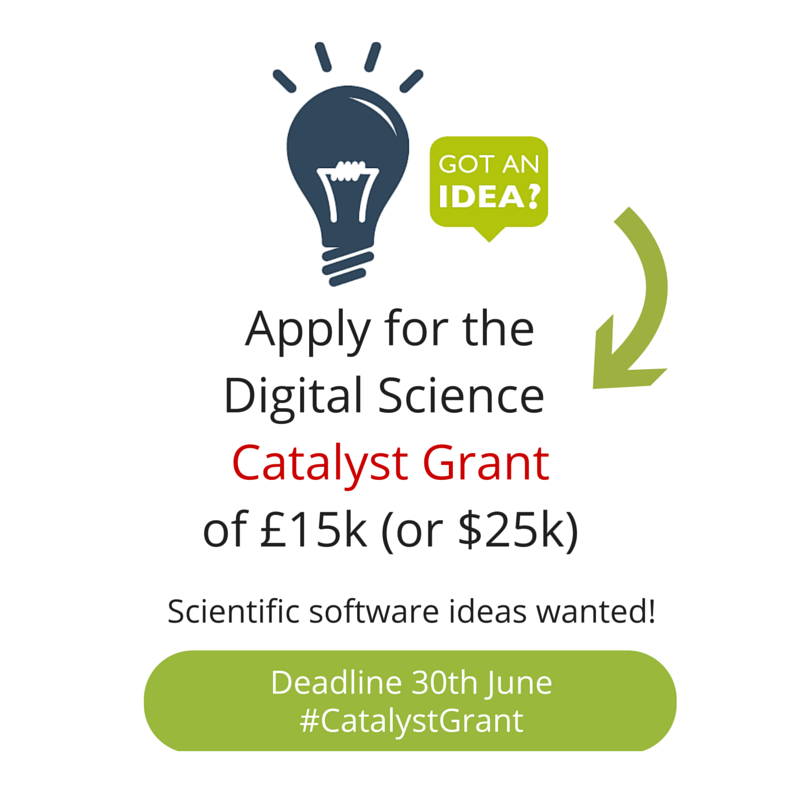
Whether it’s complying with funder mandates, collaborating with colleagues abroad, or trying to discover the right articles, the list of problems facing researchers is ever-growing.
Fortunately, there are an increasing number of software tools and technologies to solve these problems, allowing researchers to spend more of their time on what they really care about—their research! Many of these tools have sprung from the minds of frustrated academics who identify the need for a solution to a problem, then go ahead and build it themselves.
To support researchers to develop these ideas, Digital Science offers Catalyst Grants of up to £15,000 ($25,000), with the aim of supporting original, early-stage software ideas that further scientific research.
Michael Schmidt, a former researcher at Cornell University, was awarded one of our Catalyst Grants for his idea to develop a ‘robotic scientist’ to identify patterns in massive data sets unseen to the human eye. He and his team at Nutonian have set out to map the world’s data sets with the ‘Data Genome Project’. The goal: to collect one million datasets, analyze them in the cloud, find out what hidden equations lie in them and link them all together.
According to Schmidt, we often take the massive complexity in the world for granted. The sheer scale of a project like Nutonian needed support from other quarters to bring it to fruition. “The Catalyst Grant Program has been instrumental,” he says. “We wouldn’t have been able to do the project without it.”
James Harwood, the founder of Penelope Research, an “automated manuscript scrutiniser”, is another Catalyst Grant recipient. Penelope was born out of his frustration at seeing published research which failed to meet basic research reporting standards.
“I was working in a medical setting, where research was no longer just an abstract thing, it’s very real. All the research that’s done badly is research that’s not helping patients,” says Harwood. “I started to think about how machine reading could be used to improve what’s being published and started talking to publishers to try and find possible solutions.”
In Harwood’s view the Catalyst Grant fills a funding gap for tools and services to improve the research process. Traditional academic funders focus on research itself, rather than the scholarly process, while business investors often struggle to understand the needs of researchers and scholarly publishing.
Do you have a software idea to further scientific research? Apply for our Catalyst Grant by 30 June 2016 to get the resources and funding to make it happen.
To make your application a success, here are top tips we’ve collected from the judging panel on what we’re looking for:
1. Be clear about your idea and concept
There is nothing worse than reading an application that is long and rambling. Be concise about what your idea is and how it works. The total proposal should be no more than 1,500 words. Be sure to include a clear elevator pitch—could you summarize your concept in one tweet?
2. Are you solving a problem in science/research?
What challenge does your idea solve—and is it really a problem? Think, “why should anyone care?” Better yet, offer an explanation of how your idea could benefit scientific research.
3. Sell yourself—what is your story?
Tell us all about your experience and your educational background. Explain why the idea is important to you or how it came to you.
4. Think carefully about your budget
How exactly will you spend the funds? We want to see clear budget breakdowns. You don’t have to apply for the full amount. Be realistic and spend the time researching the costs.
5. We prefer open ideas
As a company, Digital Science lives to invest in ideas that are open, rather than proprietary. Think about how your idea can help the community.
6. Do you have any competitors?
Market research that includes a vigorous look at your competitors is a must. It is easy to say “we have no competitors” but it is probably not true. If your solution really addresses a current problem, how are people getting around it now? If they’re fixing it themselves, then that’s your competitor!
7. Be realistic, but be passionate too
We back people who are pragmatic, but also strongly devoted to their vision. That passion convinces us that you will have the strength to overcome the inevitable failures and challenges that come with building something new.
8. Think about your potential customers
Investigate the market and get to know more about your potential customers. Great products only succeed with a strong understanding of the end user.
9. Check out past winners
Do your research and watch our videos from past winners, and read our blog posts.
10. Spend time on your application
Dedicate time to your application, don’t rush it. We want to see your dedication, and hopefully the time will be worth it in the end!
Comments